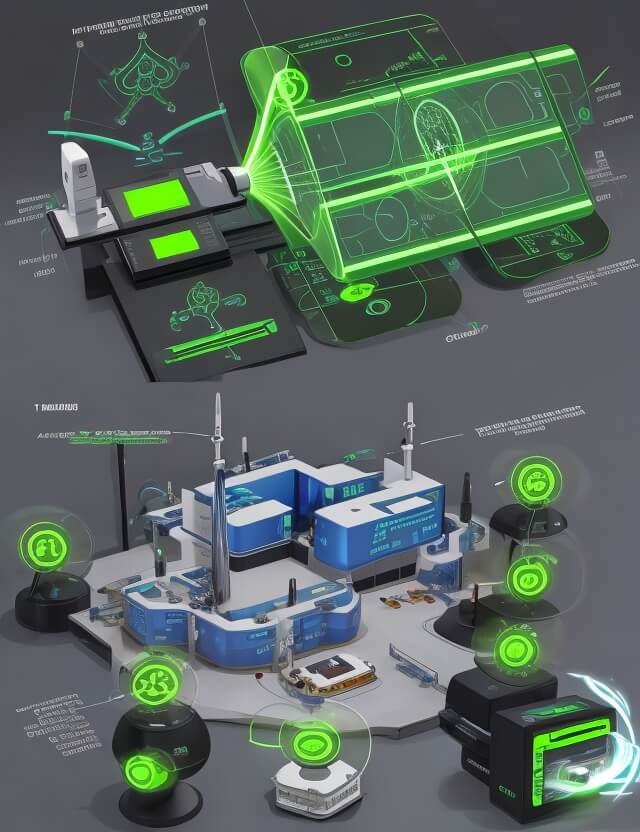
Advanced Wireless Power Transfer System – Future of Energy
Introduction
The concept of wireless power transmission is not new; it was introduced by Nikola Tesla in the early 20th century. However, advancements in technology have made it possible to develop more efficient and practical wireless power transfer systems. This article explores the components, working principles, and applications of advanced wireless power transfer systems.

The Basics of Wireless Power Transmission
Wireless power transmission involves the transfer of electrical energy from a power source to an electrical load without the use of conductors. This is achieved through electromagnetic fields, which allow for the wireless transfer of energy over short distances.
Components of Wireless Power Transmission
The basic components of a wireless power transfer system include:
- HF Transformer: High-frequency transformer for AC conversion.
- 2 Inductor Coils: One acts as the transmitter and the other as the receiver.
- Resistors, Capacitors, and Transistors: For circuit stability and performance.
- Cables and Connectors: For internal connections.
- Diodes: For rectification.
- PCB and Breadboards: For circuit assembly.
- LED: Indicators for system status.
- Transformer/Adapter: For power supply.
Working Principle
The system works by converting AC 230V 50Hz to AC 12V at high frequency. This is then fed to a primary coil, which acts as the transmitter. The secondary coil, positioned at a distance (around 3cm in our example), receives this high-frequency AC and converts it back to usable power. For demonstration purposes, a fan is used as the load, which operates entirely through this wireless power.
Applications
- Wireless Charging: For smartphones, tablets, and electric vehicles.
- Medical Devices: For charging implants like pacemakers.
- Home Appliances: For wire-free kitchens and living spaces.
Advantages and Limitations
- Advantages: Convenience, reduced cable clutter, and potential for automation.
- Limitations: Range restrictions and efficiency losses over distance.
Conclusion
Advanced wireless power transfer systems offer a glimpse into the future of how we will interact with electrical devices. As technology continues to advance, we can expect these systems to become more efficient and widely adopted.
Hardware Requirements
- Arduino Uno
- 2 Inductor Coils (one for transmitting and one for receiving)
- 1 LED (to indicate power reception)
- 1 Push Button (to initiate power transfer)
- Resistors, capacitors, and other basic components
Software Requirements
- Arduino IDE
Sample Code
// Pin Definitions
const int transmitPin = 9; // Transmitting coil connected to pin 9
const int receivePin = 10; // Receiving coil connected to pin 10
const int ledPin = 13; // LED connected to pin 13
const int buttonPin = 2; // Push button connected to pin 2
// Variables
int buttonState = 0; // Variable to hold the button state
void setup() {
// Initialize Pins
pinMode(transmitPin, OUTPUT);
pinMode(receivePin, INPUT);
pinMode(ledPin, OUTPUT);
pinMode(buttonPin, INPUT);
}
void loop() {
// Read the state of the push button
buttonState = digitalRead(buttonPin);
// Check if the button is pressed
if (buttonState == HIGH) {
// Activate the transmitting coil
digitalWrite(transmitPin, HIGH);
// Check if power is received
if (digitalRead(receivePin) == HIGH) {
// Turn on LED to indicate power reception
digitalWrite(ledPin, HIGH);
} else {
// Turn off LED
digitalWrite(ledPin, LOW);
}
} else {
// Deactivate the transmitting coil
digitalWrite(transmitPin, LOW);
// Turn off LED
digitalWrite(ledPin, LOW);
}
}
In order to download the PDF, You must follow on Youtube. Once done, Click on Submit
Subscribed? Click on Confirm
Download Advanced Wireless Power Transfer System – Future of Energy PDF






